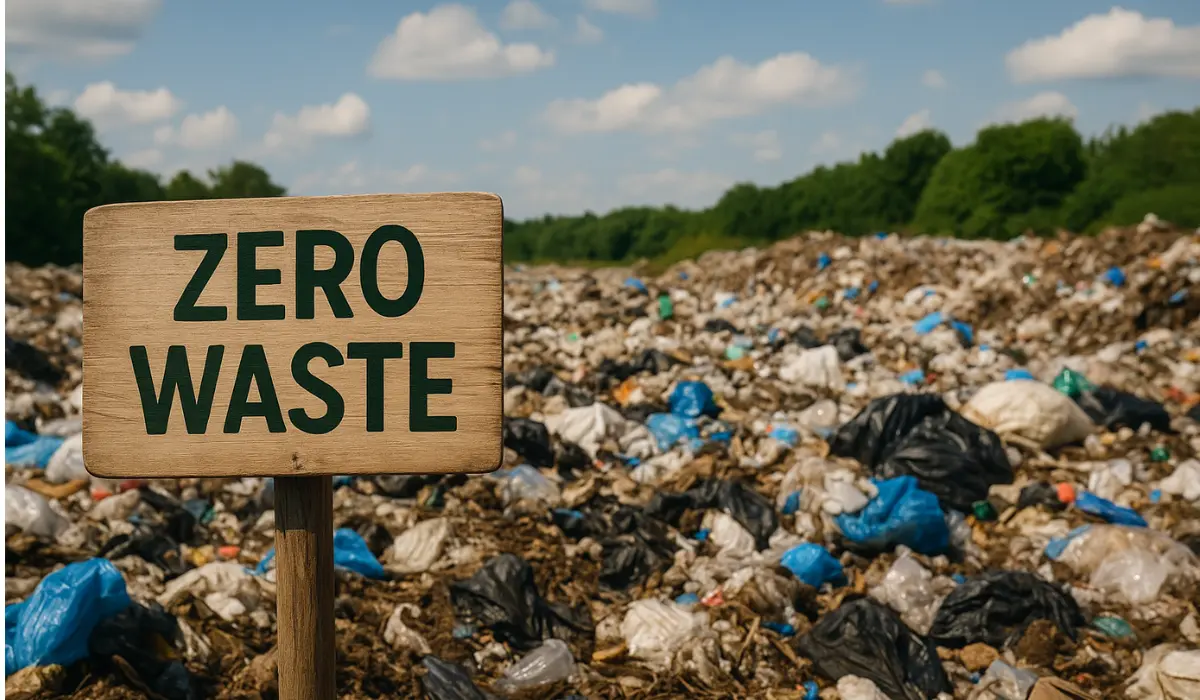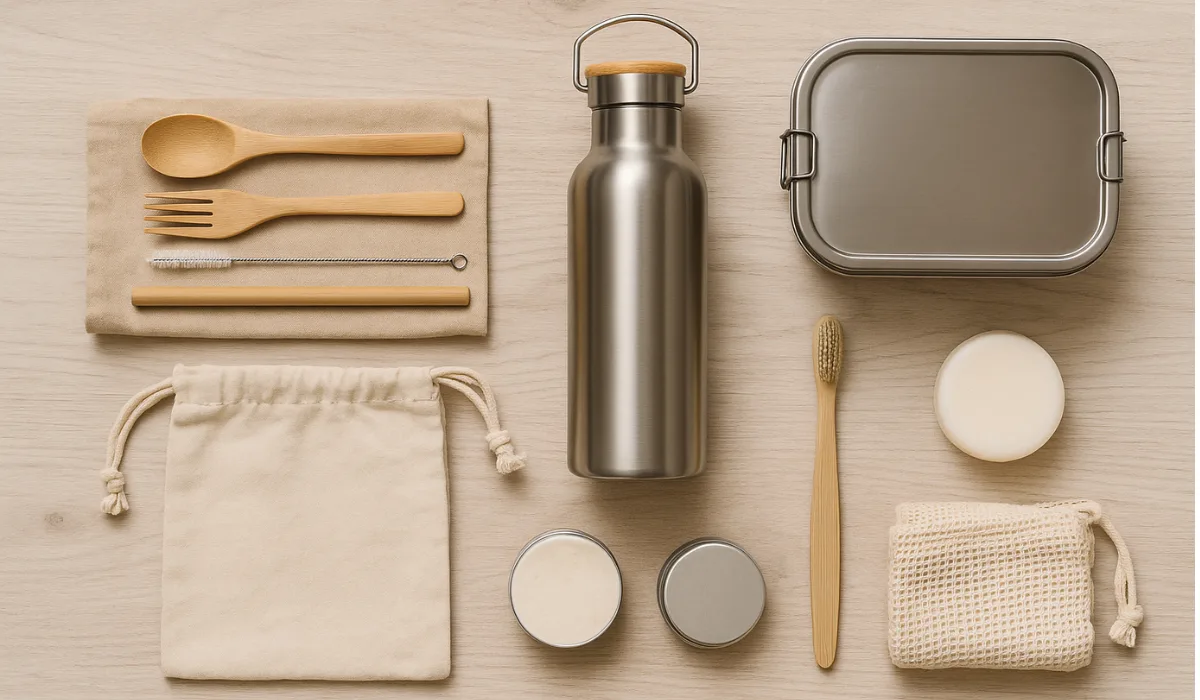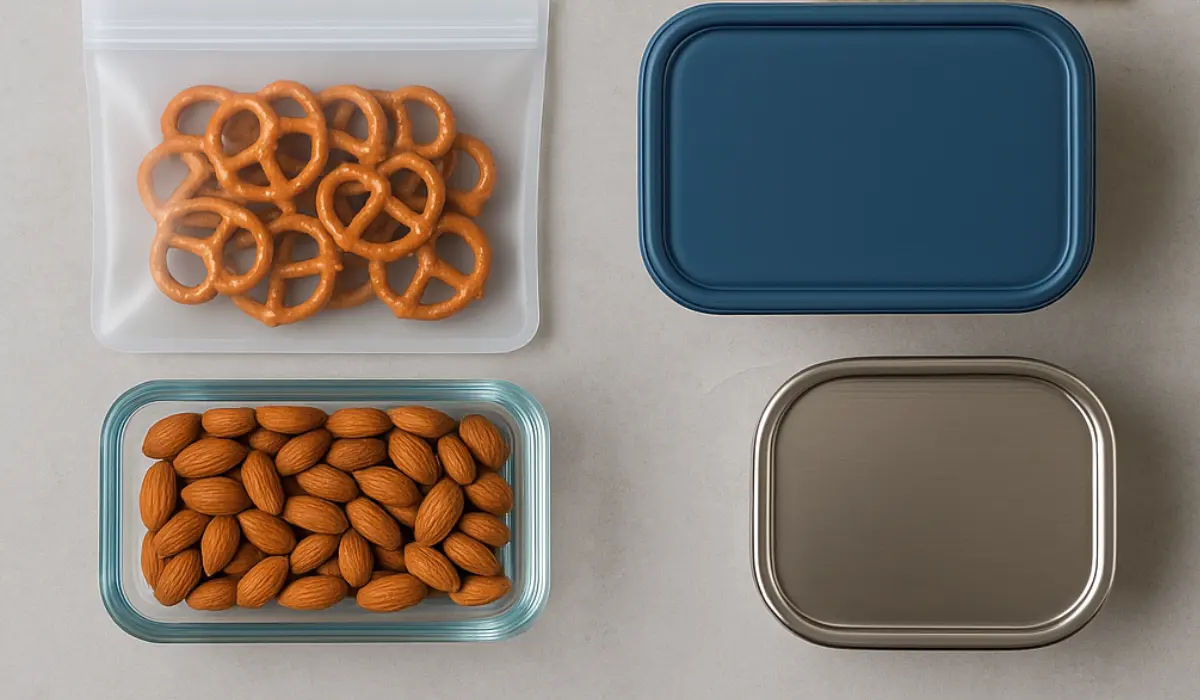The modern waste crisis has reached a critical point. With landfills overflowing, oceans choked with plastic, and climate change intensifying, the need for comprehensive environmental solutions is more urgent than ever. One of the most effective frameworks for addressing these issues is the zero waste philosophy, which emphasizes a strategic hierarchy of actions known as the 5 R’s: Refuse, Reduce, Reuse, Recycle, and Rot.
This expert guide explores each of these principles in depth, highlighting how Americans can integrate the 5 R’s into their daily lives to build a more sustainable, waste-free future.
What Are the 5 R’s of Zero Waste?
The 5 R’s of zero waste serve as a roadmap for minimizing environmental impact through conscious decision-making. Listed in order of priority, these principles are designed to prevent waste before it starts and ensure that any remaining materials are processed in the most sustainable way possible.
Each “R” represents a tier in the waste management hierarchy, moving from the most effective (Refuse) to the least (Rot). Here’s what they mean and how they contribute to the broader goals of zero waste:
1. Refuse: Say No to What You Don’t Need
The first and most crucial step in the zero waste hierarchy is to refuse anything that contributes to waste, pollution, or unsustainable consumption. This means making deliberate choices to avoid items that are unnecessary, poorly made, or destined for the landfill.
How to Practice Refusing:
- Decline single-use plastics, such as straws, cutlery, and shopping bags.
- Say no to freebies and promotional items that you won’t use.
- Avoid excessive packaging by shopping in bulk or bringing your own containers.
- Opt out of junk mail and paper catalogs by registering on mail preference services.
Environmental Impact:
By refusing waste before it enters your life, you reduce demand for resource-intensive manufacturing and help shift market dynamics toward more sustainable alternatives.
2. Reduce: Use Less, Own Less
Once you’ve refused what’s unnecessary, the next step is to reduce your consumption. This doesn’t mean deprivation; it means being intentional about what you bring into your home and your life.
Strategies to Reduce:
- Buy fewer, higher-quality items that last longer.
- Cut down on energy use with efficient appliances and habits.
- Limit food waste by meal planning and proper food storage.
- Downsize your wardrobe with a capsule closet.
Benefits of Reducing:
Reducing helps conserve natural resources, lower greenhouse gas emissions, and reduce the overall volume of waste. It also often leads to financial savings and a simpler, more fulfilling lifestyle.
3. Reuse: Extend the Life of What You Own
After refusing and reducing, the next best option is to reuse items instead of disposing of them. Reuse helps keep materials in circulation and reduces the need for new production.
Practical Reuse Ideas:
- Use reusable containers for food, water, and shopping.
- Repair broken items instead of replacing them.
- Shop secondhand for clothing, furniture, and electronics.
- Repurpose jars, boxes, and fabric for storage or crafts.
Community-Based Reuse:
Participate in or start tool libraries, swap meets, or repair cafes in your area. These initiatives promote shared ownership and waste reduction on a community scale.
Why Reuse Matters:
Every reused item diverts waste from landfills and reduces demand for virgin materials, saving energy and lowering emissions associated with production and transport.
4. Recycle: Process Materials Responsibly
Recycling has long been the poster child of environmental action in the U.S., but it’s actually fourth on the zero waste hierarchy. While recycling is better than landfilling, it still requires energy and resources. Moreover, contamination and lack of infrastructure often undermine its effectiveness.
How to Recycle Properly:
- Know your local guidelines, as rules vary by city and state.
- Clean and sort items correctly to avoid contamination.
- Avoid wish-cycling — only recycle what is actually recyclable.
- Use drop-off centers for hard-to-recycle items like electronics, batteries, and textiles.
Limitations of Recycling:
Only about 32% of waste in the U.S. is recycled, according to the EPA. Many materials, like certain plastics, are economically impractical to recycle. This is why the first three R’s are more impactful.
Still, Why It Matters:
When done right, recycling conserves raw materials, saves energy, and reduces the environmental toll of resource extraction. It’s a vital part of a comprehensive zero waste strategy.
5. Rot: Return Organic Matter to the Earth
The final R is rot, which refers to composting organic waste like food scraps, yard clippings, and paper products. Composting transforms waste into nutrient-rich soil, closing the loop in a truly sustainable way.
Composting Options:
- Backyard compost bins for homes with outdoor space
- Worm composting (vermicomposting) for small spaces
- Municipal composting programs in many U.S. cities
- Compost pick-up services for urban residents
What to Compost:
- Fruit and vegetable scraps
- Coffee grounds and tea bags
- Eggshells and bread
- Yard waste, leaves, and small branches
- Compostable paper products (non-coated)
Environmental Benefits of Composting:
Organic waste in landfills produces methane, a potent greenhouse gas. Composting prevents this and improves soil health, increases biodiversity, and reduces the need for chemical fertilizers.
Implementing the 5 R’s in Everyday Life
Integrating the 5 R’s of zero waste into your routine doesn’t require perfection. It begins with awareness and small, consistent actions. Here are some tips for making the transition:
Home and Lifestyle:
- Create a waste audit to understand what you throw away most.
- Set up dedicated bins for recyclables, compost, and donations.
- Choose products with minimal or plastic-free packaging.
Shopping and Food:
- Bring your own bags, jars, and containers to stores.
- Buy bulk items and seasonal produce.
- Support local farmers and zero waste markets.
Work and Travel:
- Pack a zero waste kit with utensils, a water bottle, and a napkin.
- Use digital notes and e-tickets to minimize paper use.
- Encourage your workplace to adopt zero waste practices.
The Role of Policy and Community
While personal responsibility is important, achieving zero waste in the U.S. also requires policy change and systemic support. Examples include:
- Bans on single-use plastics
- Extended producer responsibility (EPR) laws
- Investment in composting and recycling infrastructure
- Public education campaigns
Communities can amplify individual efforts through initiatives like tool libraries, reuse centers, and community gardens. Local action creates a ripple effect that can influence broader societal norms.
Why the 5 R’s Matter Now More Than Ever
The U.S. produces more waste per capita than any other country. Yet the solution isn’t more trash cans or recycling bins—it’s a cultural and behavioral shift toward sustainability. The 5 R’s offer a clear and achievable path toward that goal.
By prioritizing refusal, reduction, and reuse before recycling and composting, Americans can dramatically reduce their ecological footprint and help create a more circular economy.
In the context of climate change, resource scarcity, and biodiversity loss, zero waste is not just an individual lifestyle choice—it’s a necessary movement for environmental and public health.
Conclusion: Rethink, Relearn, and Recommit to Zero Waste
Adopting the 5 R’s of zero waste is about more than managing garbage—it’s about redefining our relationship with the planet. From refusing unnecessary items to composting organic waste, each action helps move the U.S. closer to a sustainable future.
As individuals, families, communities, and nations, we have the opportunity to rethink the way we live and consume. By committing to these principles, we become part of a growing effort to protect our planet for generations to come.












1 thought on “The 5 R’s of Zero Waste: Refuse, Reduce, Reuse, Recycle, Rot”